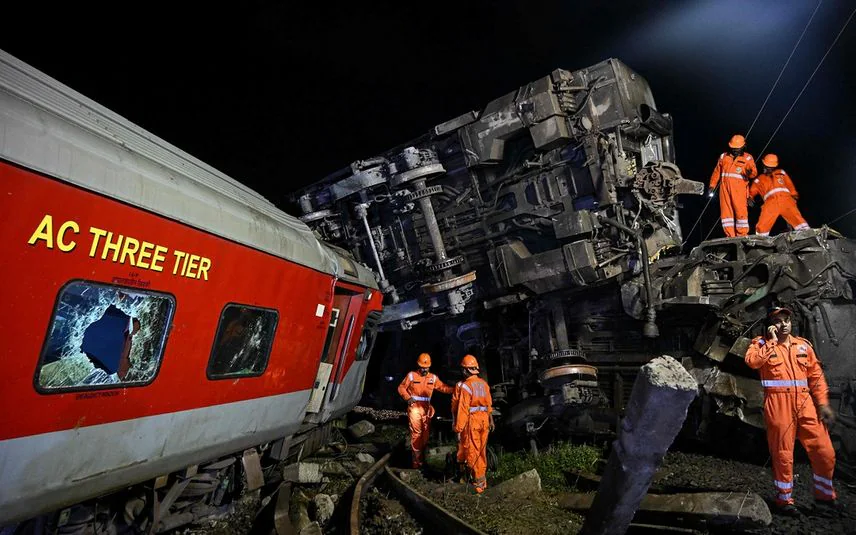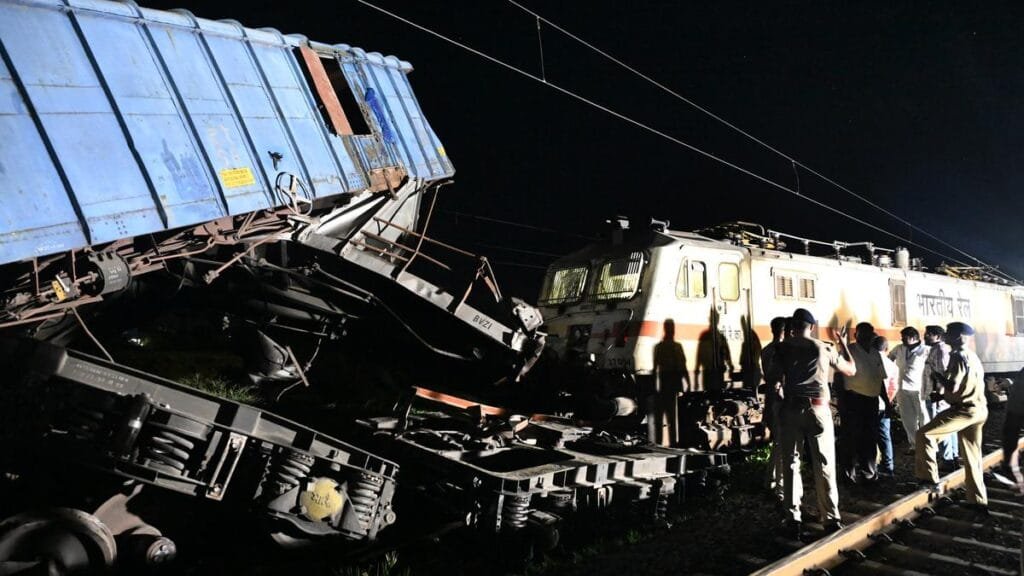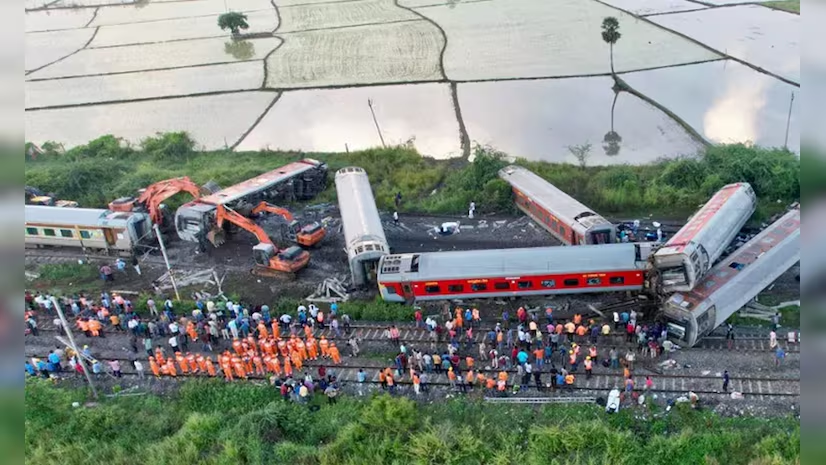key Highlights;
On 11 October 2024, a very serious collision occurred between the Mysuru-Darbhanga Bagmati Express at Kavarapettai near Chennai in the state of Tamil Nadu when the train crashed into a stationary goods train. The accident has resulted in the derailment of 12 coaches with 19 passengers injured. Preliminary investigations are ruling towards the sabotage angle with the probe by the NIA over the angle of track tampering.
Collision and Initial Findings
The Bagmati Express was traveling at a speed of around 75-90 km/h when it derailed off the main line and entered the loop line, ramming into a stationary goods train. It was night time, and some coaches derailed; two caught fire. Lucky enough, there was no casualty. This was due to engineering excellence and safety features in Linke Hofmann Busch (LHB) coaches. Though a number of passengers got injuries and were admitted in hospitals near the spot.

The Southern Railway conducted a high-level inquiry into the disaster, and signal mismanagement has emerged as one of the probable causes. However, what is confirmed by the NIA involvement is that there must be something more than the technical failure behind this mishap.
Track Tampering Sabotage Angle
The NIA thinks that tracks at the accident spot were probably altered with some malicious intent. Missing bolts and other parts in the railway track sparked a sense of foul play, investigators suspected in the initial stages. This sabotage theory attains more credibility as it closely resembles a similar earlier incident at Ponneri, where signals had been found removed.

The sabotage theory comes from the fact that this train was under a green signal for the main track, and yet, it somehow landed on the loop line. Be it the human error or malfunctioning signalling or external tampering, this is what is being investigated. The NIA is very particular with the site investigation as well as even study the tools probably used in tampering with the tracks-one hammer was found near the scene.
High-Level Inquiry by Southern Railway
As a fallout of the crash, Southern Railway officials have ordered that all safety, signaling, and operational procedures pertaining to the rail will be carefully inspected. The Commissioner of Railway Safety has, in order to determine if the crash was the result of a procedural failure or agency interference, asked the officials from the Southern Circle to aid him in the inspection. Among all other things, the electronic control panels and track switches that decide the route of the train are under close scrutiny.
The Railways are under huge pressure from state and national leaders who demand responsibility. The deputy chief minister of Tamil Nadu, Udhayanidhi Stalin, who visited the hospital to meet the injured passengers, strongly attacked the central government and reiterated the requirement of the stringent safety requirements in rail transport. These comments reflect the anxiety of most people after the recurring major train accidents.
Comparison with Balasore Accident
The Kavarapettai crash, bearing an uncanny resemblance to the disastrous Balasore accident of 2023, in which a passenger train had collided with a stationary goods train, has brought back comparisons. Though the incident did claim several lives in Balasore, the Bagmati Express, owing to its quick response and this inherent safety measure, saved the situation this time around from turning out into a disaster like that one. Yet, yet again the disaster brings parallels between the two accidents and sends the cause of railway safety back onto the debating table and signifies the need for infrastructural upgradations.
Conclusion: Sabotage or System Failure?
Indian Railways and NIA have been working together to find the cause of this unfortunate accident. The sabotage aspect has caused serious concern all over the country. It came at a very sensitive moment, with its potential impact on national security.
Whether it was due to technical failures, human mistakes, or intentional sabotage, the fact is that rail infrastructure needs a comprehensive review to ensure millions of passengers who travel daily are safe. The coming weeks are likely to divulge more as the probe uncovers it, but, in the immediate horizon, focus remains on recovery of those injured and restoring confidence in India’s rail network.
For Latest News Updates Click Here
